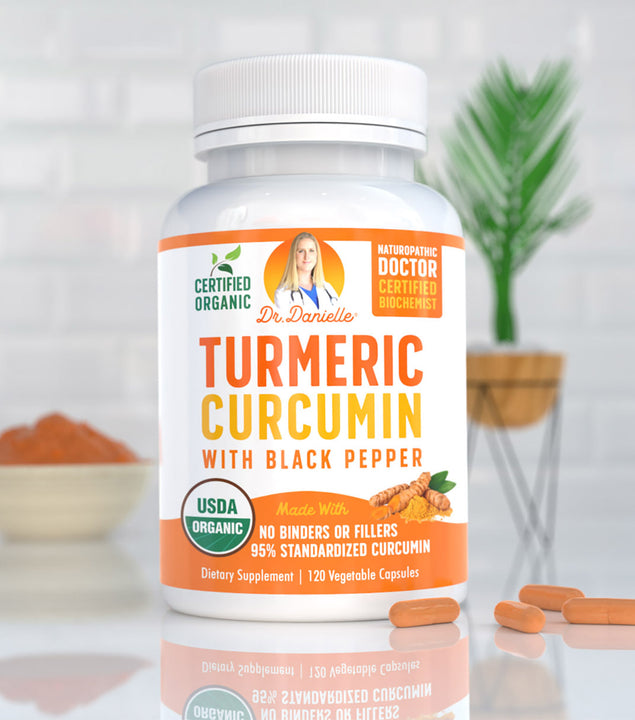Getting out of bed in the morning hurts. Sitting down on the chair? Ditto. Oh, and let’s not forget climbing the stairs: pure agony. No, it’s not arthritis – but a temporary, albeit nonetheless painful condition known as delayed onset muscle soreness, or DOMS (i.e., post-workout muscle soreness). DOMS isn't a bad thing. Instead, it's an entirely normal phenomenon that occurs when you work your muscles harder than usual (e.g., increased exercise intensity) or differently (e.g., learning yoga when you typically strength train). Both scenarios cause microscopic tears to your muscle fibers, resulting in inflammation that, in turn, causes the “soreness” you feel (1, 2).
As the fibers heal, they become bigger and stronger than before. Meaning? Over time, you'll perform better at your workouts and become fitter. Still, that's the long game. In the short term, you're still struggling with the pain. So … is there any way to speed up the recovery process? Yes. But you’ll have to continue reading to find out what they are.
#1: Stay active
When seemingly everything hurts because of physical activity, more exercise may be the last thing on your mind. But it shouldn’t be. Movement can help increase blood flow throughout your body – clearing blood lactate accumulation and speeding up the delivery of nutrients (e.g., amino acids, the building blocks of muscle) and oxygen to the healing sites (3). This, in turn, improves recovery. But, of course, don't be mistaken. Staying active in this context doesn't mean that you should be squatting 100 kg or running a marathon in the name of recovery. Instead, what you're aiming for is something called "active recovery". In other words, some form of low-to-moderate intensity activity that's no more than 60% to 70% of your maximum effort.
If you’re trying to reduce the stress placed on your joints on these “rest days”, a suitable active recovery activity for you would be swimming. Just so you know: according to a 2010 study published in the International Journal of Sports Medicine, triathletes who followed a HIIT session with a pool recovery session demonstrated better exercise performance the next day (4). Can't swim – or don't have access to a pool? Other "gentle" exercise forms you could consider are cycling, walking, and jogging; these are all activities that are easier on the joints.
#2: Go for a massage
It's common to associate the massage experience with relaxation (imagine someone kneading your worries away … bliss), but the truth is that it could also do wonders for achy muscles. Why? Well, remember how improved blood circulation speeds up post-workout recovery? According to this 2015 meta-analysis published in Current Reviews in Musculoskeletal Medicine, a massage can help stimulate blood flow to the area being worked on (5). And plenty of studies makes it clear just how beneficial that is for recovery. Take, for instance, this 2018 meta-analysis of 99 studies published in Frontiers in Physiology. After analyzing the effects of 10 different recovery methods (e.g., cryotherapy and active recovery), researchers concluded massage to be the most effective recovery technique (6).
Concerned about the costs? Note that you don't necessarily have to go for deep tissue massages. Regular sessions would do – so long as your therapist applies enough pressure to stimulate blood flow. Don't be afraid to provide feedback to them during the session (e.g., "Could you apply a little more pressure on my thighs?”) You shouldn’t be rude but do remember that you’re still paying for a service, so you deserve to get what you ask for. That said, if you can’t imagine shelling out money for frequent massage sessions, you could also consider a “hack” that may stimulate increased blood circulation: Dr. Danielle’s Alpha Lipoic Acid. ALA could potentially improve vascular endothelial function, which, imaginably, would then increase blood flow (7, 8, 9).
#3: Wear compression garments
It’s easy to dismiss compression garments’ supposed benefits for post-workout recovery as nothing but marketing hype – but research doesn’t lie (10, 11). Thanks to their tight-fitting nature, these garments help "guide" blood back toward the heart, increasing the speed and volume at which it flows. But wait. Just how effective are compression garments for recovery? Well, let's take another look at the 2018 meta-analysis of 99 studies. Although massage took first place in alleviating DOMS (as previously mentioned), as it turns out, compression garments tied with active recovery as the second most effective recovery technique for reducing muscle soreness. Now, think about what that means for a second.
It means that wearing compression garments would help boost your recovery rate to the same degree as engaging in active recovery! You've got to admit that's impressive. That said, there are two things you should be mindful of that'll help you get the most out of your compression garments. First: the fit. Your garment shouldn't be so tight that it cuts off your blood circulation, but also shouldn't be so loose that you can see air bubbles (remember, it needs to “guide” blood back to your heart). The second thing to be mindful of? You should wear the compression garment on the body part that needs recovery. In other words, wearing compression sleeves won’t help with soreness in the calves.
#4: Eat lots of anti-inflammatory foods
Inflammation is the root cause of muscle soreness. So, it only makes sense that antioxidants would boost post-workout recovery due to their potent anti-inflammatory properties. Research agrees (12). Antioxidant supplementation has been found to slightly reduce muscle soreness in the first three days after exercise. That said, here's a disclaimer: there's no benefit to taking overly high doses of antioxidants (i.e., more than the normal recommended dose for antioxidants). Consuming excessive antioxidants may be counterproductive as some extent of inflammation is necessary for the tissue healing process. More specifically, being too enthusiastic on the antioxidants front may delay healing and recovery from exercise and hinder training adaptations (13, 14).
But what’s the “right” amount to take? In general, the best way to hit your daily antioxidants needs is by eating a healthy diet comprised of a good variety of fruits, vegetables, legumes, nuts, and whole grains. That said, if you don't have easy access to fresh, whole foods (or are unable to meal prep), then you could consider adding antioxidant supplements to your routine. Psst: Dr. Danielle stocks lots of these, including Turmeric Curcumin, Royal Jelly, and Elderberry Immune Assist (packed with vitamin C!)
#5: Feed your muscles
Here’s a quick recap: exercise leaves your muscles riddled with microscopic tears. They’re essentially tiny wounds. So, how does your body go about healing them? You can find the answer in a recent 2021 study published in Science (15). Shortly after your workout session concludes, the control centers of muscle cells (called "nuclei") scuttle toward tears in the muscle fibers and issue commands for new proteins to be built to "seal" the wounds. And what are the "raw materials" that your body needs for protein synthesis? Answer: amino acids. This, in turn, highlights the importance of you consuming adequate protein in the periods before and after working out. But what is "adequate"? Research suggests that, in general, getting about 20 grams of protein after a strenuous workout is ideal (16). For reference: that’s about 100 grams of chicken breast.
You should also make sure that your body can absorb all the nutrients you're eating. And the key to that lies in a healthy gut. To illustrate, having a leaky gut syndrome (i.e., an abnormally elevated level of intestinal permeability) could cause undigested, large chains of proteins to "leak" into your bloodstream (17, 18). In addition to being utterly useless for the healing process, your immune system may also mark these undigested proteins as foreign invaders – and attack. So, to keep your gut health in tip-top condition, do consider supplementing with Dr. Danielle’s Daily Probiotics and Gut Assist (Leaky Gut Support). Gut Assist also contains glutamine which is essential for your work out routine. (Click here to learn more).
#6: Stay well-hydrated
Preliminary research suggests that the less hydrated you are, the worst your DOMS would be (19). While more research is needed, a plausible reason for this is water’s role in the body; it helps remove the waste products and toxins generated by muscle tissue breakdown (20). So, the more water you drink, the quicker your body will clear these waste products. The adequate daily intake for water is 100 ounces for men and 74 ounces for women (21). That said, your exact water needs will vary depending on your diet, where you live, and your activity level.
Not a big fan of plain water? Dr. Danielle’s Electrolyte’s got you covered; its refreshing, delicious raspberry lemonade flavor is bound to keep you reaching out for more. Bonus: it’s also rich in electrolytes (as made apparent by its name!), so you won’t experience the typical headaches associated with electrolytes imbalance (22).
Takeaway

There are no doubts about it: exercise is good for mental and physical health. Consistently sticking to a regular workout routine could help you ward off stress, depression, and various chronic health conditions like diabetes, heart diseases, and many types of cancer. The only significant "downside" to exercise would arguably be the occasional muscle soreness. Still, you can easily manage that by making use of any of the recovery techniques mentioned in this article (by the way: you can also combine the methods) – so DOMS isn't an excuse for you to miss your workout sessions!








